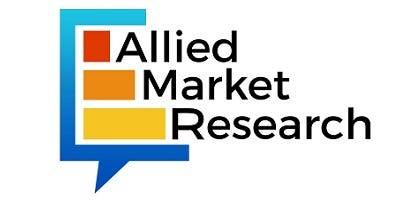#Reverse Vending Machine Market share
Explore tagged Tumblr posts
Text
Reverse Vending Machine Market Poised to Grow at a Steady Pace Due to Rising Focus on Recycling

The reverse vending machine market is anticipated to witness high growth owing to rising focus on effective waste management and recycling across various countries. A reverse vending machine is an automated machine that accepts used containers like plastic bottles, aluminum cans, and returns money or a voucher to the user. It allows easy collection and sorting of recyclable materials like plastic, glass, aluminum, and ensures high recovery rates. The growing environmental concerns and strict norms regarding the disposal of waste have boosted the deployment of reverse vending machines globally.
The Global Reverse Vending Machine Market is estimated to be valued at USD 468.2 Mn in 2024 and is expected to reach USD 701.4 Mn by 2031, exhibiting a compound annual growth rate (CAGR) of 5.94% from 2024 to 2031.
Reverse vending machines simplify the recycling process and encourage consumers to recycle through incentives like cash rewards or loyalty points. They play a vital role in effective waste management by collecting and sorting materials according to their type for easy recycling. The increasing instances of single-use plastic ban across nations will also propel the demand for reverse vending machines to encourage recycling. Key Takeaways Key players operating in the reverse vending machine market are Aco Recycling, Ake Environmental Technologies, Diebold Nixdorf, Endlos Innovations Private Limited, Envipco Holding N.V., Kansmacker International, RVM Systems AS, Sielaff GmbH & Co. KG, Tomra Systems ASA, Teraoka Seiko Co. Ltd., Trautwein, Veolia, and Zeleno. Tomra Systems, a leading provider of sensor-based sorting solutions, has a strong presence in the reverse vending machine business and offers intelligent reverse vending machines for container recycling globally. Envipco operates in over 20 countries and provides customized reverse vending solutions to retailers and consumers. The recyclable packaging waste generated globally presents significant opportunities for Reverse Vending Machine Market Growth. According to estimates, more than 1.9 billion tons of recyclable waste is generated annually worldwide. Growing volumes of packaging waste coupled with regulations supporting its collection will drive the demand for reverse vending solutions. Major players are expanding their global footprint by offering customized reverse vending machines suitable for local recycling practices in different countries and regions. Market Drivers and Restraints Growing environmental regulations regarding plastic waste disposal is a key driver for the reverse vending machine market. Governments across countries are implementing strict norms to curb single-use plastics. For instance, the EU has imposed landfill and incineration bans on recyclable plastic packaging waste. This is anticipated to positively impact reverse vending machine demand. High initial investments associated with the procurement and installation of Reverse Vending Machine Companies can restrain market growth. Retrofitting and infrastructure upgrade requirements further add to the overall costs. Technical challenges during reverse vending machine operations related to material identification accuracy pose difficulties. This necessitates continual technology advancements to enrich sorting effectiveness and accuracy.
Segment Analysis The reverse vending machine market is dominated by the non-refundable segment as it accounts for the largest market share currently. This is due to the rising demand for effective recycling of PET bottles, aluminum cans, and other packaging that are non-refundable in nature. The non-refundable segment holds a significant portion of the total recyclable waste generated worldwide. Reverse vending machines facilitate the collection and recycling of non-refundable packaging items on a large scale at high volumes. Global Analysis The Europe region holds the largest share in the reverse vending machine market currently due to stringent regulations regarding waste collection and recycling. Countries like Germany, Norway, and Sweden have adopted reverse vending extensively to meet recycling targets. However, the Asia Pacific region is expected to witness the highest growth during the forecast period owing to rapid industrialization, rising environmental awareness, and implementation of regulatory policies in emerging economies such as India and China for effective waste management practices. The increasing focus toward reducing carbon footprint and promotion of circular economy initiatives will continue to drive the reverse vending machine market globally in the upcoming years.
Get more insights on Reverse Vending Machine Market
Vaagisha brings over three years of expertise as a content editor in the market research domain. Originally a creative writer, she discovered her passion for editing, combining her flair for writing with a meticulous eye for detail. Her ability to craft and refine compelling content makes her an invaluable asset in delivering polished and engaging write-ups.
(LinkedIn: https://www.linkedin.com/in/vaagisha-singh-8080b91)
#Coherent Market Insights#Reverse Vending Machine Market#Reverse Vending Machine#Recycling Machine#Bottle Return#Sustainability#Recycling Technology#Waste Management#Eco-Friendly#Deposit Return#Plastic Recycling
0 notes
Text
Retail Vending Machine Market Size, Share and Growth Opportunities to 2030
The global retail vending machine market size was valued at USD 51.91 billion in 2021 and is expected to register a compound annual growth rate (CAGR) of 10.7% from 2022 to 2030.
Increasing demand for on-the-go snacks and beverages due to the hectic lifestyles of consumers is boosting product sales through vending machines. The industry growth can also be attributed to the ability of these machines to deliver goods quickly, making it an extremely convenient option for consumers. From offices to high-end restaurants and crowded bars to public places, accessing food & beverage items is made simple with a vending machine. This, in turn, is likely to drive their demand.
Gather more insights about the market drivers, restrains and growth of the Retail Vending Machine Market
The coronavirus pandemic has unfavorably influenced the consumer goods industry with lockdowns having an impact across the supply chain. The impact on food and beverage companies will likely be complex, influencing both the demand and supply. In contrast, a change in consumer behavior has been observed, generating demand for various consumer goods, wherein several consumers have switched between brands.
Simultaneously, manufacturers are deciding on how to handle potential disruption across the supply chain and are identifying areas to improve and meet consumer demand. Vending machine operators have witnessed the impact and a fall in revenue, especially in April 2020 as compared to 2019.
Sales through vending machines look promising as vending machines not just offer snacks and beverages but can also sell other consumables, such as cigarettes and lottery tickets. Hence, operators can generate significant revenue through these devices by strategically placing them in corporate buildings, schools, malls, train stations, and airports, among others. For instance, in August 2019, it was announced that over 1 million plastic bottles had been recycled through reverse vending machines in Iceland stores. The healthy lifestyle trend is becoming increasingly prominent across the globe on account of growing consumer awareness regarding healthy food and beverage options.
According to 2019 research by The Vending People, the sales of zero-sugar beverages surged by 38.2% from the first half of 2018 to the first half of 2019, in the U.K., while sales of high-sugar content beverages have seen the biggest drop. Sales of these drinks were down by 19.8% when compared to the same timespan the previous year. Low-calorie drinks outsold other beverages by 196%, showing that customers are looking for healthier alternatives.
Retail Vending Machine Market Segmentation
Grand View Research has segmented the global retail vending machine market report based on type, payment mode, application, and region:
Type Outlook (Revenue, USD Million, 2017 - 2030)
• Food
• Beverage
• Games/Amusement
• Tobacco
• Candy & Confectionery
• Beauty & Personal Care
• Ticket
• Others (Ice-cream Vending Machines, Pharmacy, Vending Machine, etc.)
Payment Mode Outlook (Revenue, USD Million, 2017 - 2030)
• Cash
• Cashless
Application Outlook (Revenue, USD Million, 2017 - 2030)
• Commercial Places
• Offices
• Public Places
• Others
Regional Outlook (Revenue, USD Million, 2017 - 2030)
• North America
• Europe
• Asia Pacific
• Central & South America
• Middle East & Africa
Browse through Grand View Research's Electronic & Electrical Industry Research Reports.
• The global electronic soap dispenser market size was valued at USD 929.0 million in 2023 and is projected to grow at a CAGR of 7.4% from 2024 to 2030.
• The global smart toys market size was valued at USD 12.37 billion in 2023 and is expected to grow at a CAGR of 11.5% from 2024 to 2030.
Key Companies & Market Share Insights
Operators are adopting various strategies to maximize profit by being at the right location with the right products, sourcing products in bulk, investing in intelligent vending machines to gain consumer insights, and other ways. For instance, hot food and sandwich vending machines may do well in business environments, universities, and schools, while, in most public locations, hot drinks like coffee, tea, and hot chocolate have high demand. Industry players face intense competition from each other, as some of them operate at several locations and have large customer bases. The presence of many small-scale players is also leading to increased competition.
• In 2021, Coca-Cola Beverages Florida (Coke Florida) and Coca-Cola Co. teamed up to launch a new Reverse Vending Machine (RVM) at the University of Miami. The materials are crushed and sorted by type, then collected, treated, and prepared for re-use. The process ultimately reduces carbon emissions across the supply chain and supports Coca-Cola’s World Without Waste initiative to recycle a bottle or can sold by 2030
• In 2022, under the CSR initiative to curb carbon footprint, the Small Industries Development Bank of India (SIDBI) and the Dalit Indian Chamber of Commerce and Industries (DICCI) jointly announced the installation of 1,000 Plastic Reverse Vending Machines (RVMSs). The launch was announced under the ‘Swachh Delhi, Swavalambi Delhi’ initiative. The RVMs will be installed at as many public places like malls, metro stations, and parks as possible
• In 2021, the MENstruation Foundation, a nonprofit organization that fights “period poverty”, introduced a sanitary pad vending machine, the first in Africa. The pads are locally manufactured and compostable. The foundation says that it aims to reach at least 100 schools by 2022 and hopes to double that in the years to come. Support from the corporate sector-such as MTN, which has sponsored two machines-was crucial
Key players operating in the global retail vending machine market include:
• Azkoyen Group
• Cantaloupe Systems
• Westomatic Vending Services Limited
• Royal Vendors, Inc.
• Glory Ltd.
• Sanden Holding Corp.
• Seaga Manufacturing Inc.
• Orasesta S.p.A
• Sellmat s.r.l.
• Fuji Electric Co., Ltd.
Order a free sample PDF of the Retail Vending Machine Market Intelligence Study, published by Grand View Research.
0 notes
Text
"𝑬𝒄𝒐𝒃𝒓𝒐'𝒔 𝑳𝒂𝒔𝒕 𝑺𝒕𝒂𝒏𝒅: 𝑻𝒉𝒆 𝑼𝒍𝒕𝒊𝒎𝒂𝒕𝒆 𝑷𝒊𝒕𝒄𝒉 𝒇𝒐𝒓 𝒐𝒖𝒓 𝑹𝒆𝒗𝒆𝒓𝒔𝒆 𝑽𝒆𝒏𝒅𝒊𝒏𝒈 𝑴𝒂𝒄𝒉𝒊𝒏𝒆 "
ECOBRO_LORIE JANE A. BANTACULO


Our journey with Ecobro towards the final pitching was far from easy. It was filled with sacrifices and misunderstandings within the group. However, we managed to ensure the success of our final pitching presentation. Looking back at our midterm pitching, our performance was not up to par, with many shortcomings and lack of preparation. This realization prompted us to give our all and fill in the gaps during our last pitching.




We collaborated closely to create our prototype and address the questions raised by the panelists in our midterm pitching. We tackled crucial aspects such as proving the money-generating potential of our machine and assessing its feasibility. Despite initial conflicts and differing ideas within the group, we communicated effectively, aligned our goals, and worked together to defend our venture.
Through thorough preparation and increased confidence, we stood ready to defend our project. Despite the challenges, we managed to overcome conflicts, find common ground, and present a united front in showcasing our innovative idea. Our teamwork, dedication, and shared vision propelled us towards a successful final pitch presentation for the Ecobro reverse vending machine venture."
𝔈𝔫𝔱𝔯𝔢𝔭𝔯𝔢𝔫𝔢𝔲𝔯𝔦𝔞𝔩 𝔐𝔦𝔫𝔡 𝔏𝔢𝔠𝔱𝔲𝔯𝔢 𝔖𝔢𝔯𝔦𝔢𝔰


The Entrepreneurial Mind lecture series gave an in-depth discussion about the importance of intellectual property rights, start up ecosystem and its difference between a traditional business. I learned that a traditional business is a business that has already an established market and has proven to be scalable while a start up is a project, may be scalable, and offers a not so obvious solution. The speakers also emphasized the need to protect intellectual properties by having patents to gain exclusive rights over ideas and products.
The Entrepreneurial Mind lecture series delved into the significance of intellectual property rights, the startup ecosystem, and the distinctions between a traditional business and a startup. One key takeaway was the differentiation between a traditional business, which operates in an established market and has demonstrated scalability, and a startup, which is a project with potential scalability and offers innovative solutions that may not be immediately apparent.
The speakers underscored the importance of safeguarding intellectual properties through patents to secure exclusive rights over ideas and products. This protection ensures that the innovative concepts and products developed by startups are shielded from unauthorized use or replication, fostering a competitive edge in the market.
Moreover, the discussion shed light on the startup ecosystem, emphasizing the dynamic and evolving nature of startups compared to traditional businesses. Startups are characterized by their agility, adaptability, and focus on disruptive solutions to address emerging challenges and market gaps. This contrasts with traditional businesses that operate within established frameworks and market structures.
By recognizing the value of intellectual property rights, understanding the nuances between traditional businesses and startups, and navigating the complexities of the startup ecosystem, aspiring entrepreneurs can position themselves strategically to drive innovation, growth, and success in the competitive business landscape.
𝔈𝔫𝔱𝔯𝔢𝔭𝔯𝔢𝔫𝔢𝔲𝔯𝔦𝔞𝔩 𝔐𝔦𝔫𝔡 𝔍𝔬𝔲𝔯𝔫𝔢𝔶
"Throughout this semester, the Entrepreneurial Mind journey has been a rollercoaster of ups and downs. Our group, Ecobro, faced numerous challenges from deciding on our venture to the tragic loss of one of our member and a friend of mine due to a vehicular accident, to defending every pitching session. Despite the struggles, we gained invaluable learnings and unforgettable experiences. The sacrifices and stress we endured to excel in this subject while balancing hectic schedules were truly worth it. It exemplifies the quote 'No pain, no gain.' Overall, it was a success – Ecobro performed exceptionally well!"
0 notes
Link
0 notes
Text
Reverse Vending Machine Outlook, Geographical Segmentation, Industry Size & Share, Comprehensive Analysis to 2031
The global reverse vending machine market size was valued at $372.0 million in 2020, and is expected to reach $736.9 million by 2030, with a CAGR of 6.6% from 2021 to 2030.
Reverse vending machine also called as automated recycling machine. Reverse vending machine can be used by consumers to return their empty food containers and drink containers and receive rewards such as cash or refund. Reverse vending machine offers an alternative way to recycle bottled containers in convenient and efficient manner. It is used in various places such as shopping complexes, airports, municipal, and metro stations. Increase in disposable income of individuals, which in turn, rise in spending on food and beverages, which is expected to rise in demand for more reverse vending machine for waste collection effectively, which fuels the growth of the global reverse vending machine. For instance, the disposable income of South African population grew by 5.7% from 4th quarter (September-December) 2018 to 4th quarter (September-December) 2020.
The management of waste has emerged as a severe problem due to environmental policy, owing to massive quantities of waste generated every day due to growth in population. An increase in the urban population is expected to drive the global reverse vending machine market growth. For instance, by 2025, the urban population is expected to reach 4.3 billion, generating around 1.42 kg/capita/day of municipal solid waste, which is expected to rise in demand for reverse vending machines and fuels the growth of the global market.
A government initiative to launch reverse vending machine for airport, metro stations, and railway stations for effective waste management practices, which fuels the growth of the global reverse vending machine market. For instance, Glassglow Airport launched reverse vending machine for effective waste management. This machine can accepts 650 cans, and 320 plastic bottles, which offered by waste management partner company Biffa Plc.

Region wise, the global reverse vending machine market analysis is conducted across North America (the U.S., Canada, and Mexico), Europe (Spain, France, Germany, Italy, and rest of Europe), Asia-Pacific (China, Japan, India, South Korea, and rest of Asia-Pacific), and LAMEA (Latin America, the Middle East, and Africa). In 2020, Asia-Pacific was the highest contributor to the global reverse vending machine market share, and is anticipated to secure a leading position during the forecast period.
Competition Analysis:
Key players profiled in this report include Sielaff GmbH & CO KG, Ake Environmental Technologies, Envipco Holding N.V., Endlos Innovations Private Limited, Tomra Sorting GmbH, Diebold Nixdorf, RVM Systems, Aco Recycling, Kansmacker Mfg, and Teraoka Seiko Co Ltd.
Full Report With TOC:-https://www.alliedmarketresearch.com/reverse-vending-machine-market-A12784
0 notes
Text
Technology in Reverse Vending Machine Market shares forecast to witness considerable growth from 2019 to 2026

The Reverse Vending Machine market 2019 examines the global Reverse Vending Machine market from a competitive outlook as well. Top Companies of Reverse Vending Machine are mentioned and a detailed competitive profile is presented for each of them. The Global Reverse Vending Machine Market report contains Market Revenue, Investment Opportunity, Market Features, Market Demand by Segment & Reverse Vending Machine market Growth aspects. A wide variety of applications, Utilization ratio, and Supply and demand analysis also consists of the report. It shows manufacturing capacity, Reverse Vending Machine Price during the Forecast period from 2019 to 2026. Reverse Vending Machine Market by Key players, Countries, Types and End Users, forecast to 2026 to its research database. This analysis is segmented on the bases of applications, types, technology, and geography. Access Exclusive Sample Report @ https://www.acquiremarketresearch.com/sample-request/274267/ In this report,the reverse vending machine is expected to grow at a CAGR of 10.47% from 290.03 M USD in 2016 to reach 527.18 M USD by 2022 in global market. Popularly known as RVMs, reverse vending machine is a device that accepts used (empty) beverage containers and returns money to the user. The machines are popular in places that have mandatory recycling laws or container deposit legislation. In some places, bottlers paid funds into a centralized pool to be disbursed to people who recycled the containers. Any excess funds were to be used for general environmental cleanup. On the basis of product, the Reverse Vending Machine market is primarily split into Refillable type, Non-Refillable type and Multifunction type, and the proportion of Non-Refillable type in 2016 was about 71.6%. On the basis of applications, this report covers Supermarkets, Community and Utilities. The reverse vending machine is mainly used for upermarkets, Community and Utilities. And Supermarket was the most widely used which takes up about 58.8% of the global market in 2016. The major players in global Reverse Vending Machine market include Tomra, Incom recycle, TRautwein SB Technik, Diebold Nixdorf, RVM Systems AS, Envipco and Kansmacker. The reverse vending machine market is very concentrated market; the revenue of top six manufacturers accounted about 85% of the total revenue in 2016. Europe was the largest sales place, with revenue market share nearly 83.4% in 2016. Asia Pacific and North America are also important sales regions for reverse vending machine. Competitive Analysis: Our research analysts also have taken significant account facets and landscape scenarios like the Reverse Vending Machine industry market placement plan frame, and competitive atmosphere for providing a competitive analysis. Extensive evaluation of major competitors performing in the global Reverse Vending Machine market: Tomra, Incom recycle, TRautwein SB Technik, Diebold Nixdorf, RVM Systems AS, Envipco, Kansmacker Type analysis classifies the Reverse Vending Machine market into: Non-Refillable type, Multifunction type Profound market segmentation analysis focusing on major applications: Non-Refillable type, Multifunction type Get Special Discount On Report (Higher Preference For Corporate email ID User):https://www.acquiremarketresearch.com/discount-request/274267/ Market Segment by Regional analysis ensures: ‘North America, Asia-Pacific, UK, Europe, Central & South America, Middle East & Africa.’
Our report provides:
• Global Reverse Vending Machine Market share evaluations for regional and country-level sections;Market share analysis of the industry players; • Present tips to the newest entrants; • Market predictions by 2026 of the mentioned the niches, sub-sections along with sections; • Economy Trends (Constraints, Opportunities, Threats, Challenges, Investment Opportunities, and Tips); • Tactical tips in key Reverse Vending Machine industry segments centered in the market estimations; • Aggressive landscaping mapping is the main element of global Reverse Vending Machine market trends that are prevalent; • Company profiling with financials, plans, and recent advancements;Supply series trends mapping technological advances; Read Detailed Index of full Research Study at:https://www.acquiremarketresearch.com/industry-reports/reverse-vending-machine-market/274267/ Our researchers have delivered a point by point outline of the total key market players concerning demand, revenue, and deals. Moreover, the correct figures and the graphical depiction of the Reverse Vending Machine market are shown in a represented strategy. The report shows an examination of conceivable contention, current market designs and other basic characteristics all around the world. The document’s author believes with this research study, your market-related doubts will be resolved and you will get great assistance in growing in the competitive sphere.
#Reverse Vending Machine Market#Reverse Vending Machine Market Share#Reverse Vending Machine Market Size#Reverse Vending Machine Market Growth#Reverse Vending Machine Market Trends
0 notes
Text
2020 Reverse Vending Machine Market Size 2020 by Top Key Players: Tomra, Incom recycle, TRautwein SB Technik, Diebold Nixdorf, RVM Systems AS, Envipco, Kansmacker
2020 Reverse Vending Machine Market Size 2020 by Top Key Players: Tomra, Incom recycle, TRautwein SB Technik, Diebold Nixdorf, RVM Systems AS, Envipco, Kansmacker
Chicago, United States, Jan 14, 2020 — The Global Reverse Vending Machine Marketreport offers a high-quality, accurate, and comprehensive research study to equip players with valuable insights for making strategic business choices. The research analysts have provided deep segmental analysis of the global Reverse Vending Machine market on the basis of type, application, and geography. The vendor…
View On WordPress
#Reverse Vending Machine#Reverse Vending Machine Industry#Reverse Vending Machine Market#Reverse Vending Machine Market Analysis#Reverse Vending Machine Market CAGR#Reverse Vending Machine Market Demand#Reverse Vending Machine Market Dynamics#Reverse Vending Machine Market Forecast#Reverse Vending Machine Market Growth#Reverse Vending Machine Market growth opportunity#Reverse Vending Machine Market Insights#Reverse Vending Machine Market key players#Reverse Vending Machine Market Latest Reports 2020#Reverse Vending Machine Market Manufacturers#Reverse Vending Machine Market opportunity#Reverse Vending Machine Market Production#Reverse Vending Machine Market Revenue#Reverse Vending Machine Market share#Reverse Vending Machine Market Size#Reverse Vending Machine Market Supply#Reverse Vending Machine Market Trend#Reverse Vending Machine Market Trends
0 notes
Text
0 notes
Text
Reverse Vending Machine Market to Scale New Heights as Market Players Focus on Innovations 2022 – 2027
Global Reverse Vending Machine Market Report from AMA Research highlights deep analysis on market characteristics, sizing, estimates and growth by segmentation, regional breakdowns & country along with competitive landscape, players market shares, and strategies that are key in the market. The exploration provides a 360° view and insights, highlighting major outcomes of the industry. These insights help the business decision-makers to formulate better business plans and make informed decisions to improved profitability. In addition, the study helps venture or private players in understanding the companies in more detail to make better informed decisions. Major Players in This Report Include:
Tomra Systems ASA (Norway)
Incom recycle (China)
TRautwein SB Technik (Germany)
Diebold Nixdorf (United States)
RVM Systems AS (Finland)
Envipco Holdings N.V (United States)
Kansmacker (United States)
Reverse vending machines are the devices that accept used beverage containers and return money to the user. These machines are installed at customer gathering places such as shopping malls, metro stations, and others. The Reverse Vending Machine market is expected to mark significant growth over the forecasted period owing to increasing consumer spending on reducing landfills, increases recycling rates applications, and lower down greenhouse emissions. With an increased focus on environmental protection, the reverse vending machine market is likely to witness strong growth in the coming years. Further, increasing demand for the intelligent PDU expected to drive the market growth over the forecasted period. Further, increasing demand for recycling projects expected to drive market growth over the forecasted period. The global reverse vending machines market was estimated to be around USD 258.8 million in 2019, according to the AMA study. Market Drivers Increase Number of Reverse Vending Machine for Recycling Process.
Rapid Demand for Eco-Friendly Environment.
Market Trend Collaboration and Tie Up Of Leading Players
Rising demand of Reverse Vending Machine at Asia-Pacific Region.
Opportunities Proliferation Of Refillable Machine Leads to Grow the Reverse Vending Machine Market.
Upsurge Demand Due to Technological Advancements in Vending Machines
Challenges Limitation Due to Government Regulations are Anticipated to Challenge the Market.
Lack of Research & Development Leads to Threat the Market.
The Reverse Vending Machine market study is being classified by Type (Refillable type, Non-Refillable type, Multifunction type), Application (Supermarkets, Community, Utilities) Presented By
AMA Research & Media LLP
0 notes
Text
Reverse Vending Machine Market is Booming Worldwide | Gaining Revolution In Eyes of Global Exposure
Latest business intelligence report released on Global Reverse Vending Machine Market, covers different industry elements and growth inclinations that helps in predicting market forecast. The report allows complete assessment of current and future scenario scaling top to bottom investigation about the market size, % share of key and emerging segment, major development, and technological advancements. Also, the statistical survey elaborates detailed commentary on changing market dynamics that includes market growth drivers, roadblocks and challenges, future opportunities, and influencing trends to better understand Reverse Vending Machine market outlook. List of Key Players Profiled in the study includes market overview, business strategies, financials, Development activities, Market Share and SWOT analysis are :
Tomra Systems ASA (Norway)
Incom recycle (China)
TRautwein SB Technik (Germany)
Diebold Nixdorf (United States)
RVM Systems AS (Finland)
Envipco Holdings N.V (United States)
Kansmacker (United States)
Reverse vending machines are the devices that accept used beverage containers and return money to the user. These machines are installed at customer gathering places such as shopping malls, metro stations, and others. The Reverse Vending Machine market is expected to mark significant growth over the forecasted period owing to increasing consumer spending on reducing landfills, increases recycling rates applications, and lower down greenhouse emissions. With an increased focus on environmental protection, the reverse vending machine market is likely to witness strong growth in the coming years. Further, increasing demand for the intelligent PDU expected to drive the market growth over the forecasted period. Further, increasing demand for recycling projects expected to drive market growth over the forecasted period. The global reverse vending machines market was estimated to be around USD 258.8 million in 2019, according to the AMA study. Key Market Trends: Collaboration and Tie Up Of Leading Players
Rising demand of Reverse Vending Machine at Asia-Pacific Region. Opportunities: Proliferation Of Refillable Machine Leads to Grow the Reverse Vending Machine Market.
Upsurge Demand Due to Technological Advancements in Vending Machines Market Growth Drivers: Increase Number of Reverse Vending Machine for Recycling Process.
Rapid Demand for Eco-Friendly Environment. Challenges: Limitation Due to Government Regulations are Anticipated to Challenge the Market.
Lack of Research & Development Leads to Threat the Market.
The Global Reverse Vending Machine Market segments and Market Data Break Down by Type (Refillable type, Non-Refillable type, Multifunction type), Application (Supermarkets, Community, Utilities)
Presented By
AMA Research & Media LLP
0 notes
Link
0 notes
Link
0 notes
Text
Reverse Vending Machine (RVM) Market 2022 – Global Industry Analysis, Size, Share, Growth, Trends, and Forecast – 2028
Reverse Vending Machine (RVM) Market 2022 – Global Industry Analysis, Size, Share, Growth, Trends, and Forecast – 2028
Reverse Vending Machine (RVM) Market 2022-2028 A New Market Study, Titled “Reverse Vending Machine (RVM) Market Upcoming Trends, Growth Drivers and Challenges” has been featured on fusionmarketresearch. Description This global study of the Reverse Vending Machine (RVM) market offers an overview of the existing market trends, drivers, restrictions, and metrics and also offers a viewpoint for…
View On WordPress
0 notes
Text
Global Reverse Vending Machine Market Size, Manufacturers, Supply Chain, Sales Channel and Clients, 2021-2027
A reverse vending machine is a device that accepts used (empty) beverage containers and returns money to the user. The machines are popular in places that have mandatory recycling laws or container deposit legislation. In some places, bottlers paid funds into a centralized pool to be disbursed to people who recycled the containers. Any excess funds were to be used for general environmental clean-up.
Global Reverse Vending Machine key players include Tomra, Diebold Nixdorf, Sielaff, Incom recycle, Envipco etc. Global top five manufacturers hold a share over 70%.
Europe is the largest market, with a share over 80%, followed by United States and China, both have a share over 8% percent.
Download FREE Sample of this Report @ https://www.grandresearchstore.com/report-sample/global-reverse-vending-machine-2021-2027-693
In terms of product, Non-Refillable Type is the largest segment, with a share over 60%. And in terms of application, the largest application is Supermarkets followed by Communities.
Market Analysis and Insights: Global Reverse Vending Machine Market
In 2020, the global Reverse Vending Machine market size was US$ 270.1 million and it is expected to reach US$ 330.2 million by the end of 2027, with a CAGR of 2.9% during 2021-2027.
Global Reverse Vending Machine Scope and Market Size
Reverse Vending Machine market is segmented by region, by country, company, type, application and by sales channels. Players, stakeholders, and other participants in the global Reverse Vending Machine market will be able to gain the upper hand as they use the report as a powerful resource. The segmental analysis focuses on sales, revenue and forecast by region, by country, company, type, application and by sales channels for the period 2016-2027.
Segment by Type, the Reverse Vending Machine market is segmented into
Non-Refillable Type
Refillable Type
Multifunction Type
Segment by Application, the Reverse Vending Machine market is segmented into
Supermarkets
Community
Utilities
Regional and Country-level Analysis:
North America
United States
Canada
Asia-Pacific
China
Japan
South Korea
India
Southeast Asia
Australia
Rest of Asia-Pacific
Europe
Germany
France
U.K.
Italy
Russia
Nordic Countries
Rest of Europe
Latin America
Mexico
Brazil
Rest of Latin America
Middle East & Africa
Turkey
Saudi Arabia
UAE
Rest of MEA
Competitive Landscape and Reverse Vending Machine Market Share Analysis
Reverse Vending Machine market competitive landscape provides details and data information by companies. The report offers comprehensive analysis and accurate statistics on revenue by the player for the period 2016-2021. It also offers detailed analysis supported by reliable statistics on sale and revenue by players for the period 2016-2021. Details included are company description, major business, Reverse Vending Machine product introduction, recent developments, Reverse Vending Machine sales by region, type, application and by sales channel.
The major companies include:
Tomra
Diebold Nixdorf
Sielaff
Incom recycle
Envipco
Trautwein SB Technik Gmbh
RVM Systems AS
Kansmacker
Get the Complete Report & TOC @ https://www.grandresearchstore.com/manufacturing-and-construction/global-reverse-vending-machine-2021-2027-693
Table of content
1 Study Coverage 1.1 Reverse Vending Machine Product Introduction 1.2 Market by Type 1.2.1 Global Reverse Vending Machine Market Size Growth Rate by Type 1.2.2 Non-Refillable Type 1.2.3 Refillable Type 1.2.4 Multifunction Type 1.3 Market by Application 1.3.1 Global Reverse Vending Machine Market Size Growth Rate by Application 1.3.2 Supermarkets 1.3.3 Community 1.3.4 Utilities 1.4 Study Objectives 1.5 Years Considered 2 Executive Summary 2.1 Global Reverse Vending Machine Market Size Estimates and Forecasts 2.1.1 Global Reverse Vending Machine Revenue 2016-2027 2.1.2 Global Reverse Vending Machine Sales 2016-2027 2.2 Reverse Vending Machine Market Size by Region: 2021 Versus 2027 2.3 Reverse Vending Machine Sales by Region (2016-2027) 2.3.1 Global Reverse Vending Machine Sales by Region: 2016-2021 2.3.2 Global Reverse Vending Machine Sales Forecast by Region (2022-2027) 2.3.3 Global Reverse Vending Machine Sales Market Share by Region (2016-2027) 2.4 Reverse Vending Machine Market Estimates and Projections by Region (2022-2027) 2.4.1 Global Reverse Vending Machine Revenue by Region: 2016-2021 2.4.2 Global Reverse Vending Machine Revenue Forecast by Region (2022-2027) 2.4.3 Global Reverse Vending Machine Revenue Market Share by Region (2016-2027) 3 Global Reverse Vending Machine by Man
CONTACT US: 276 5th Avenue, New York , NY 10001,United States International: (+1) 646 781 7170 / +91 8087042414 Email: [email protected] Follow Us On linkedin :- https://www.linkedin.com/company/grand-research-store/
0 notes
Text
Transcritical Co2 Market Size, Share, Trends and Future Analysis by PMR
The global transcritical CO2 market is anticipated to reach USD 22.44 billion by 2026 according to a new study published by Polaris Market Research.
Increasing application of transcritical CO2 in food processing industry as refrigerant is the major factor driving the product demand. It is used as a substitute for environmentally harmful refrigerants including HCFCs, CFCs, and HFCs. The development of transcritical CO2 as a refrigerant has shown potential in many applications regarding system cost and efficiency both and makes it viable for several applications that is not considered feasible. Some of the mechanism where transcritical CO2 is currently used includes heat pumps water heaters for commercial, domestic and industrial applications, refrigeration systems in supermarkets, chest freezers of ice creams, beverage coolers, water chillers for moderate climates industrial and air conditioning and refrigeration in trains and busses.
Get Sample Copy : https://www.polarismarketresearch.com/industry-analysis/transcritical-co2-market/request-for-sample
The other under development and less commercialized systems that make use of the product include mobile heat pumps, transport refrigeration systems in containers and ships, reversible and space heating in residential heat pumps, vending machines for combined cold and hot beverages, residential and non-residential combined cooling and heating buildings, heat pumps for combined space, water heating and space heating. The requirements of the product in increasing number of application systems are expected to be the major factor driving its demand from several industries.
Some of leading and currently active industry participants include Shecco SPRL, Mayekawa MSG. Co., Ltd., Systems LMP, Inc., Henry Technologies, Inc. , Baltimore Aircoil Company, Inc. , Advansor A/S, Danfoss GmbH, Bitzer Kühlmaschinenbau GmbH , SCM Frigo SPA, Emerson Climate Technologies, Carnot Refrigeration Inc., Green & Cool World Refrigeration Ab, Carrier Commercial Refrigeration, and Hill Phoenix Inc.
Get Special Discount On this Research Report @ https://www.polarismarketresearch.com/industry-analysis/transcritical-co2-market/request-for-discount-pricing
In comparison to the traditional refrigerants, transcritical carbon dioxide has the best remarkable property of having low critical temperature of 31.1 degree Celsius. Owing to this, it leads to three discrete features of carbon dioxide in the refrigeration systems. These include that heat is rejected at supercritical pressures, keeps the pressure level quite high and during heat rejection it causes gliding of large refrigerant temperatures. These fundamental functionality advantages on application of transcritical carbon dioxide are expected to help in higher penetration of its applications sectors. Hence, with such advantages of the product and increasing application segments, the market value of TC CO2 is expected to increase over the forecast period.
North America was the leading regional market for consumption of transcritical CO2 refrigeration systems. U.S. was the largest contributor to product demand in 2017. Regulations concerning the limitations of refrigerants use and leakages along with directions for using TC CO2 refrigerants in supermarkets are expected to drive further product demand. The U.S. is also a leading manufacturer and exporter of heat pumps, which is yet another potential factor driving the industry. Asia Pacific is expected to be another leading player in the global scenario. The expanding regional machinery manufacturing base and growing TC CO2 enabled cooling systems is anticipated to boost product demand.
Buy now : https://www.polarismarketresearch.com/checkouts/1321
0 notes